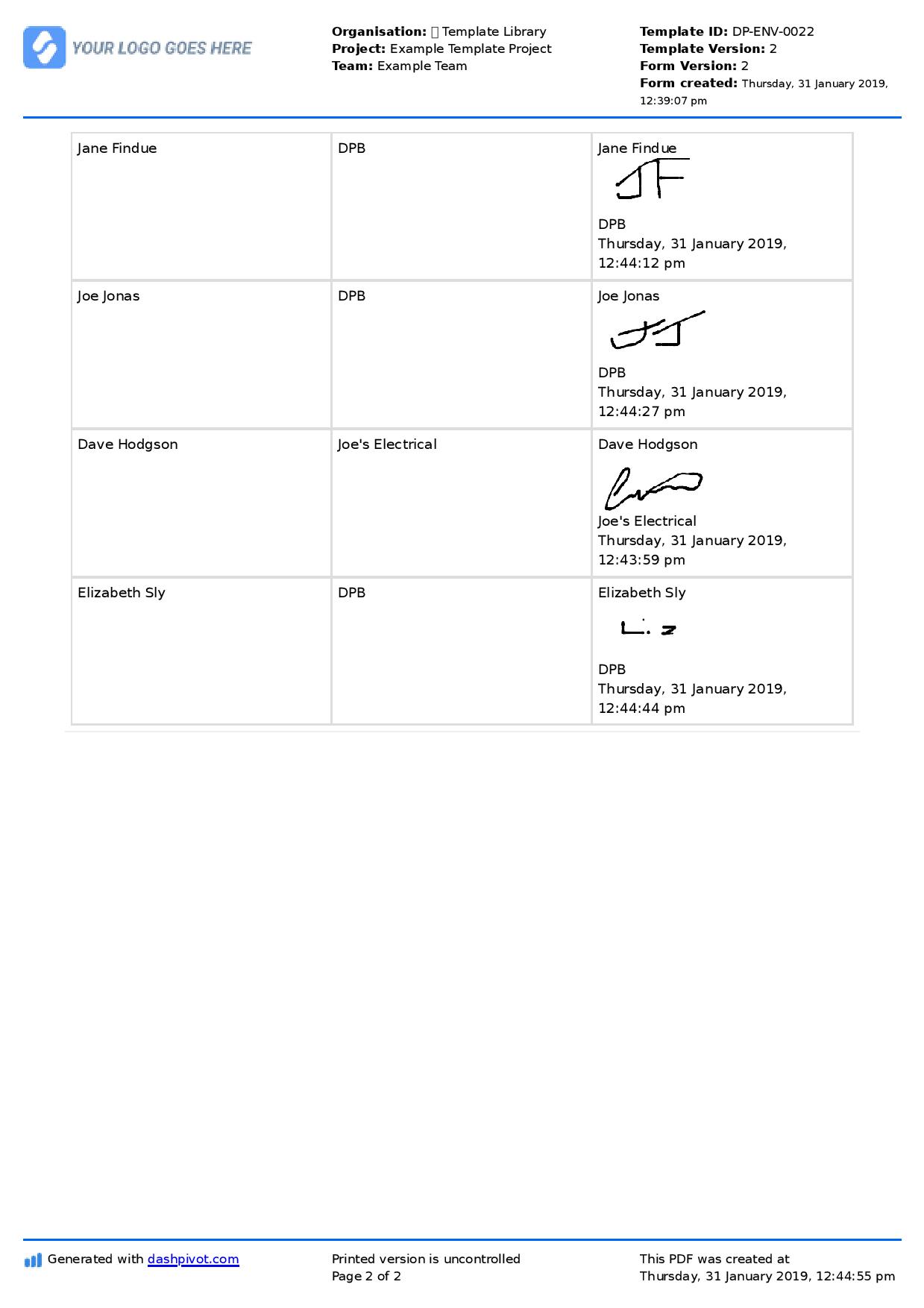Safety – Safety moment topics for oil and gas
Safety moment topics for oil and gas companies and workers
In this article, we discuss critical safety moment topics for oil and gas companies and workers and provide better resources to talk about these topics in a smooth and efficient manner.
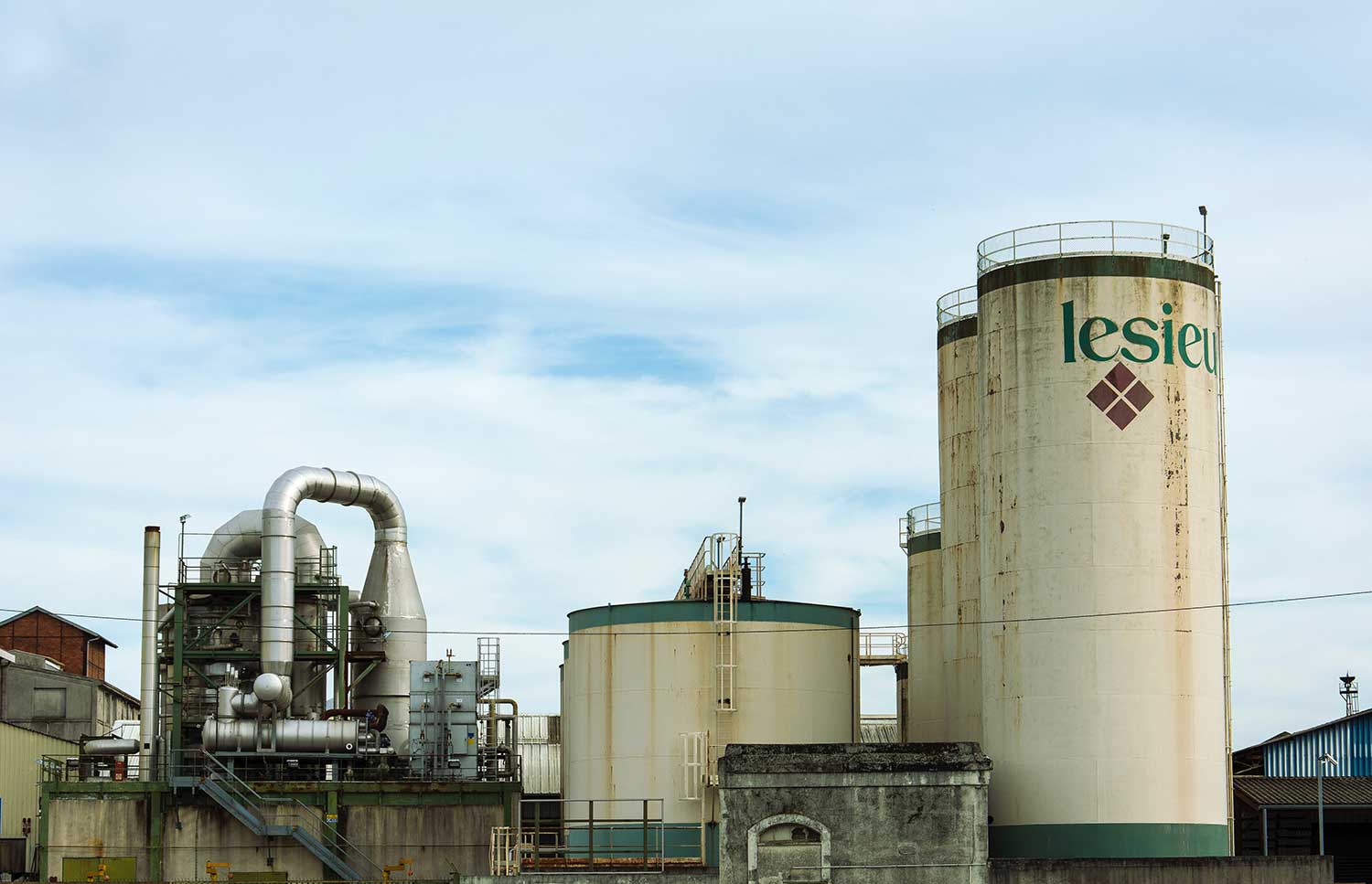
What is a safety moment?
A safety moment is a short and concise safety talk in the workplace. Each safety moment will cover a specific safety topic relevant to the workplace and environment in which it takes place.
Many companies engage in safety moments - while others have slightly different variations (which are almost identical) including safety toolbox talks and safety briefs.
The main purpose of a safety moment is to draw attention to a relevant safety topic and to discuss that topic in an informal and approachable way.
Safety moments have become extremely popular with an ever-increasing growing focus on safety, and they have also grown in popularity as a powerful tool for improving worker safety. There was a time when most companies and workers would only engage in a formal workplace safety training session - or when safety training was a short part of a workers induction.
Today, safety training is a constant, and safety moments are one of the ways in which companies and workers can constantly refine their understanding and attention to safety - and where an entire organisation can work on building a positive culture of safety.
Safety moment topics for oil and gas
The oil and gas industry is filled with safety moment topic options and opportunities - which is a good and bad thing. It makes coming up with safety moment topics pretty easy - but highlights the dangers of the industry.
While there are hundreds of safety moment topics and toolbox talk topics like these:
- First aid safety
- Lock out tag out safety
- PPE safety
- Vehicle safety
- Traffic safety
We are going to focus on safety moment topics which are more specific to the oil and gas industry. The key element of a safety moment is that it is highly relevant to the workplace at issue. You want your safety moments to be as relevant as possible, to keep people engaged and to ensure there are actionable and insightful takeaways for the attendees.
Here are some safety moment for oil and gas topics which are applicable to almost all oil and gas sites and projects - and ones which you need to cover for oil and gas safety.
Chemical exposures
Oil and gas sites and platforms almost always feature a certain amount of chemical exposure. Chemical exposure is also one of the areas of industrial worker safety which is less pronounced and understood than other safety issues such as working at heights and personal protective equipment. The general consensus is that there is a lack of exisiting information and understanding regarding the variety and magnitude of chemical exposure to oil and gas workers.
Important elements of this safety moment topic include:
- Documenting and understanding hazardous chemicals via labels and material safety data sheets
- How to deal with episodic exposure
- The difference between mixed exposures, multiple exposures and dermal exposures
- The risk of transfer risks and take-home exposures
Hazardous chemical exposure is a very real and ever-present danger for oil and gas workers, and the fact that it is more 'invisible' than other safety issues makes it even more important to talk about.
Working in remote areas
Working and travelling to remote areas is an inherent part of working in the oil and gas industry. Offshore oil and gas fields, onshore gas pipelines which are remotely located and other characteristics of the oil and gas work make it very common for workers to be working alone and/or working remotely.
Working in remote areas introduces a number of safety concerns and hazards which should be talked about and discussed during a safety moment.
In these remote areas, workers face harsh conditions and environments, they must drive/travel long distances and frequently off-road, and if an incident does occur, they are effectively stranded and must find a way to communicate the issue.
These and other nuanced elements of remote or lone worker safety like how much water to carry (more than you think) make for a good safety moment.
Explosions and fires
The oil and gas industry has more deaths from fires and explosions that any other industry. Explosions and fires are the most violent and 'obvious' and publicised hazard which oil and gas workers face. Even so, discussing and constantly reinforcing how to prevent and manage explosions and fires can be the difference between life and death.
During this safety moment topic, you'll want to cover:
- How to prevent fires and explosions from happening
- Designated exit routes and emergency action plans
- Flame-resistant clothing and other safety equipment
- How to inform and collaborate with first responders
This is a topic which can be re-visited multiple times, because it's so important.
Struck-by, caught-in and caught-between
Like construction and a number of other heavy industries, oil and gas workers suffer from being struck-by, caught-in and caught-between vehicles, machines and other obstacles at scary rates.
Part of this stems from the fact that there are many moving parts on oil and gas projects and sites (including people) and part of it stems from the general environment (such as close-quartered platforms and drilling sites).
Some of these issues will occur, but some of them can be mitigated and reduced through a better understanding of how to approach different struck-by, caught in and between hazards - which is why this safety moment is helpful.
Drilling
Drilling is an integral part of excavating oil and gas out of the earth, and drilling and drill pipe assembly and disassembly are a constant hazard to oil and gas workers.
Every step of drilling carries it's own risks and hazards, and each can be brought up and covered in a safety moment - or each may deserve its very own safety moment.
Some key elements of drilling safety to cover in your safety moment include:
- Handling pipes correctly
- Preparing drilling fluid and starting to drill
- Breaking out pipe and making up pipe
- Raising the kelly and joint out of the mousehole
While workers engaging in these activities have a thorough understanding of how to perform these processes and procedures, a safety moment is a great chance to get everyone involved and have people actively discuss their own experiences and incidents while drilling. Crowdsourcing this information is a powerful way to uncover more hazards and more ways of dealing with drilling and pipe assembly dangers.
Pressure test
We've all seen and understand the immense pressures being forced up into, down into and across pipes and platforms in the oil and gas industry. High pressure can be a lethal force, and discussing the dangers and realities of these pressures is a perfect subject of a safety moment.
Pressure testing may be a routine task for oil and gas workers, but pressurisation is hazardous energy storage, and requires adequate preparation. Key areas to cover in this oil and gas safety moment include:
- Test permitting
- Pressure test checklists
- Roping off test areas and coordinating to avoid concurrent activities
- Never tamper with or righten fittings while the test is underway
- Removing non-essential people from the test area
Engaging in this safety moment for oil and gas topic is important for testers, and important for those who are working anywhere on site.
Oil and gas safety moment topic example
So now that you have seen and read about some important safety moment topics for oil and gas workers and companies, what does the actual safety moment look like?
A good practice for conducting safety moments, like most things on oil and gas sites, is to properly document the safety moment or toolbox talk.
The oil and gas safety moment example below covered the topic of working in remote areas.
You'll see that this form was used to summarise the topic and discussions, as well create some actions to be taken and responsible people for those actions.
A great part of safety moments is the approachable and informal nature of them - but it's also important to turn those discussions into actionable items which improves worker safety.
If every safety moment you engage in is actioned, then it's inevitable that oil and gas project and worker safety will improve.
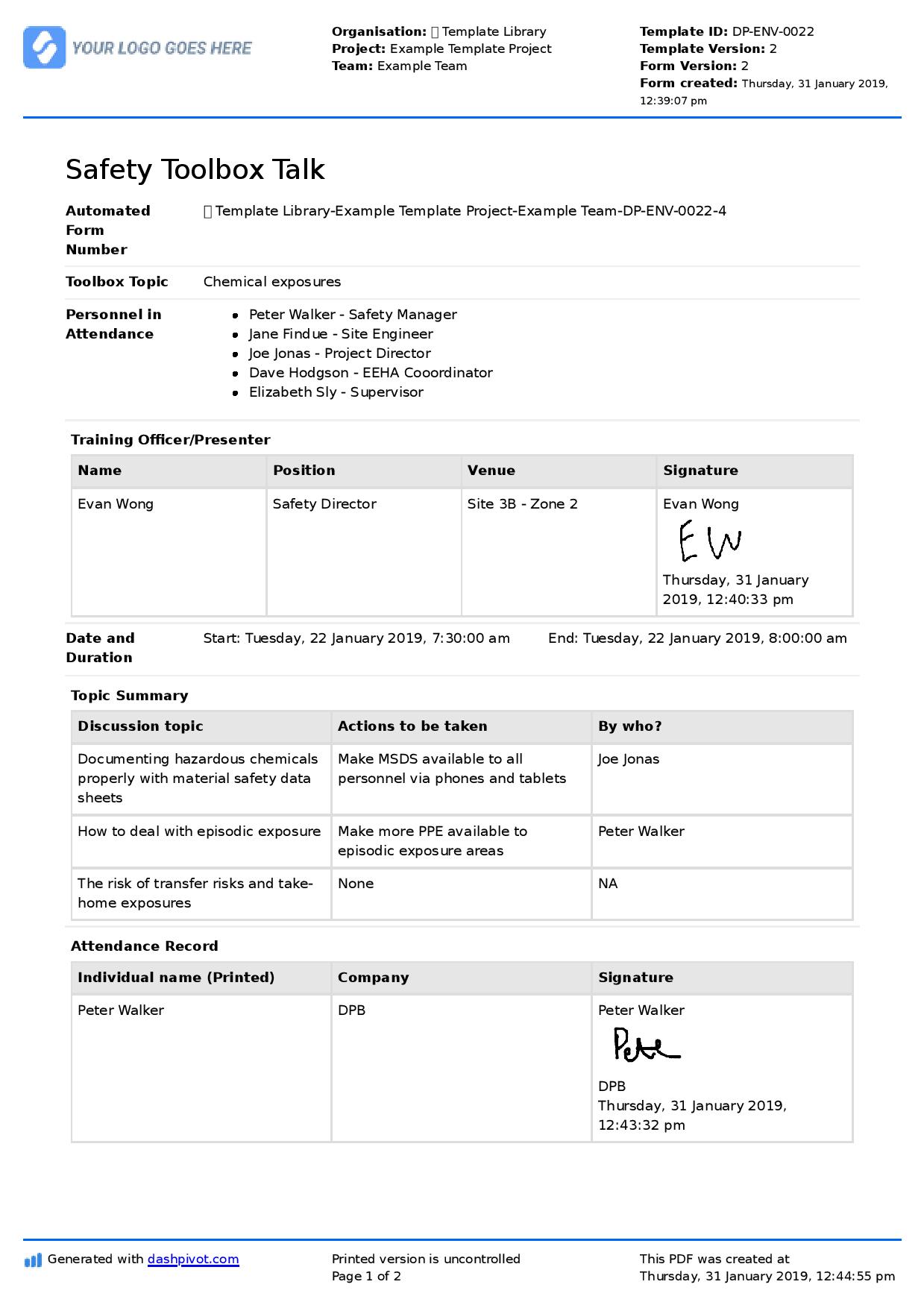
Use this safety moment framework for your own safety moment topics and talks.
How to choose the right safety moment topics for your oil and gas operations
As someone who works in the oil and gas industry, I'm sure you are more than aware of the hazards facing oil and gas companies and workers every day.
In looking for safety moments for oil and gas projects and sites, it's important to leverage this experience and understanding of the industry with the most applicable safety moments today.
Applicable can mean that there was a recent incident or near miss, it could be covering a new technology or technique which gives rise to a number of new risks and issues, or it could be conducting a safety moment which is hyper contextual to the project, site or workplace in question that day.
You want your safety moment topics to be as engaging and relevant as possible in order to encourage maximum engagement and participation from team members. If you're looking to standardise your safety moments process, consider using this safety moments app.
Safety moments are an easy and fun way for teams to come together to discuss and create strategies about how the site can be safer - and how they and their fellow site workers can stay safe in the face of the obvious dangers that the oil and gas industry continue to throw their way.
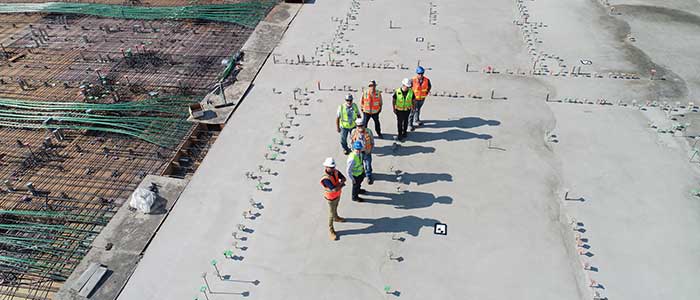
Safety Toolbox Talk Template
This toolbox talk template is quick and easy to complete and signoff on site, and keeps all of your toolbox talks neatly organised and professional.

Risk Register for Oil and Gas template
Mitigate the changes of catastrophic and expensive accidents by implementing better risk planning practices for your projects.
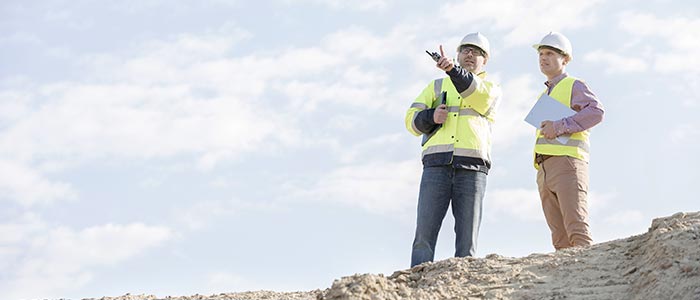
Delay Analysis Report template
This delay analysis report aims to pinpoint and assess delays in construction projects, detailing their causes and impacts.
